Process
- RECEPTION
Selected eggs are only received from healthy poultry, with no more than 48 hours posture, aware that the quality of fresh egg on farm begins.
Each item of income is recorded on index cards that reliably provide the essential information for industrialization: the date posture, date of arrival at the plant, details of the producer and farm, weight and type of egg, etc.
- CLASSIFICATION
The eggs that entered are inspected rigorously; those considered unsuitable are separated from the production line. Fresh egg is taken to a conservation chamber constructed with pre-painted sheet panels with expanded polyurethane as insulation, ensuring a constant temperature of 15-18 ° C.
.
- SANITIZATION
From the conservation chambers, where the egg does not remain more than 4 days, is transported by a charger system to the sanitation process taken with tested products in doses and suitable temperatures, where the mechanical brushing and pressured washing are combined.
- OVOSCOPIADO
This system is used for observation inside the egg using a light source. That's where the second seizure for all those eggs that still preserve irregularities occurs. (Brokenshell, dirt, etc.)
- BROKEN
In this step automatic machines are used. The mechanized allows to separate yolk, albumin and shell for three different ways, or gather the first two as whole egg. This process takes place in pressurized room with filtered air at a constant temperature of 18 C.
The yolk and albumen, which both separated make possible to prepare subsequently, various kinds in various proportions, with additives as salt or sugar depending on what are required, or both as whole egg entering the processing circuit, while the shell is transported outside the plant through a system of helical screws
.
- FILTERING
The production circuit continues through two tanks with variable flow balances, driving yolk, egg albumin or a filter system, designed to remove particles of shell, membranes and beads remaining chalaza.
From here it passes to coolers plates where an exchange with cold water reduces the temperature to between 0 and 4 ° C, finally to be stored in 8 tanks, insulated with jacket and agitation, that preserve the product or recirculating hot water with the end of desglucose fermentation
The plant also has additive tanks of 500 Kg. of capacity equipped with stirrer and scale. They can be connected to the product net through pipes in order to execute special preparation according to the food industry requires (sweet, salty, etc.)
- PASTEURIZED
The circuit continues through the pasteurizer system. This is the type exchanger plates and tubular holding cell under international standards.
The system has a reinsurance system that guarantees the quality of the operation.
The design allows fluid heating (hot water), be very close to the pasteurized product temperatures, avoiding affect physicochemical characteristics of the egg as it is a very critical area clotting protein.
- PACKAGING
LÍQUID
The pasteurized liquid will follow three different lines according to the package to use / purpose of the product.
- With automatic filling, in baskets with sterile nylon bags of 100 micron bag in box type 10 or 20 kg.
- In containers of 1,000 kg. capacity both stainless steel isolated and non isolated, and insulated plastic containers disposable bag in box or containers of cardboard.
- A bulk, in sanitary tanker trucks of 8, 16 and 24 Tn.
DRY
Dehydrated
Pasteurized liquid products are dehydrated by spray system. It used to this purpose a system of co-current type, with atomization by disc and heated drying air indirectly. It also has shaker system, electronic scale for weight control and driver metals
Bagging powder products
This is made in environments controlled thermal and bacteriologically, in bags of nontoxic and sterile nylon 100 microns thick, protected externally with corrugated box.
- LABORATORY - QUALITY
It includes controls of raw material, in process and final product. It also involucres packaging, additives, services, equipment and personnel.
Development of new products and optimization of existing formulations.
Among its functions it stands
Verification of compliance with quality standards.
Preparation of product stability curves,
Permanent development of statistics and reports concerning findings on quality and performance.
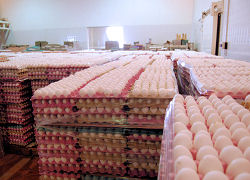
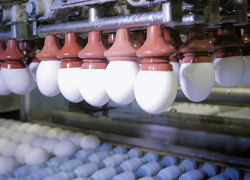
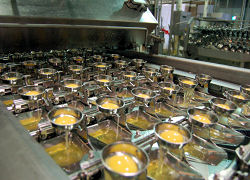
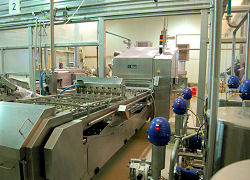
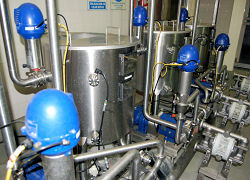
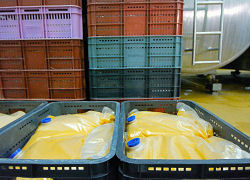
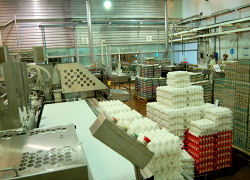
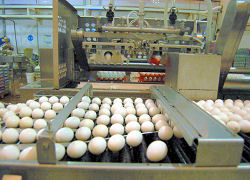
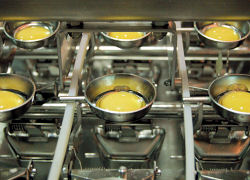
- Process
- Pasteurization
- Quality Policy


